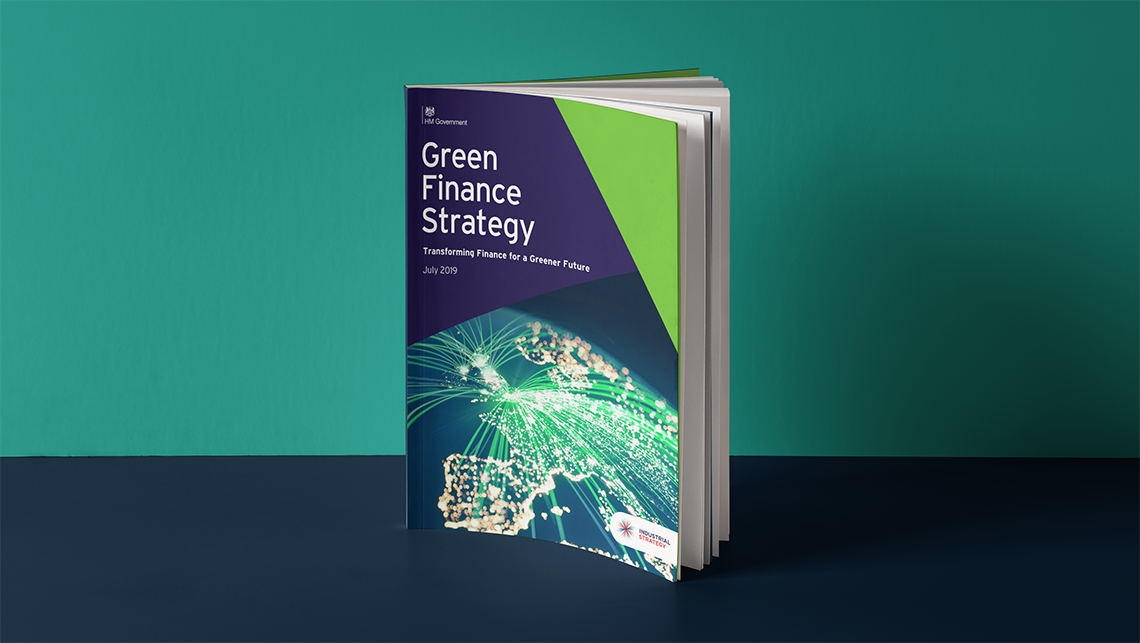
Stay informed with regulations, insights & events by joining our mailer
Since the UK government announced its commitment to the UK becoming a net zero carbon economy by 2050, businesses and public bodies have been vocal in expressing their thoughts, in support of the initiative, but also concerned with how the target can be practically achieved and how much the transition is going to cost. The government has also made it clear that it expects the finance sector to be at the heart of efforts to tackle climate change and reduce emissions to net zero.
Last week (2 July), the long-awaited Green Finance Strategy was unveiled, outlining how the finance sector and improved corporate climate disclosures can drive progress towards wider action on climate change and push towards net zero emissions. Banks, investment funds, asset managers and pension schemes are not only being pushed to invest in sustainability but also be transparent about their own exposure to climate change risks.
The strategy sets out how key ambitions can be achieved and what action is needed to accelerate the growth of green finance, from greening the financial system and catalysing the investment needed for green projects, to driving innovation in financial products and building skills across the financial sector.
The strategy is underpinned by the UK’s desire to cement its climate and environmental leadership and its objective to strengthen the competitiveness of the UK financial sector by capturing global commercial opportunities.
Sound confusing? Here’s a quick breakdown of the key outcomes of the strategy:
What makes finance green?
Greening the finance sector will look at making fundamental changes to the way decisions are made across the economy to ensure current and future financial risks and opportunities from climate and environmental factors are integrated into mainstream financial decision making. The strategy sets out several clear, ambitious actions, including:
- ensuring that all listed companies and large asset owners disclose environmental and climate change information in line with the TCFD recommendations by 2022;
- establishing a taskforce to support quality disclosure and work with the British Standards Institution to develop a set of Sustainable Finance Standards; and
- clarifying responsibilities for key financial regulatory bodies, including the Financial Conduct Authority and the Pensions Regulator.
These are just three of the fourteen actions listed within the strategy, with longer-term actions looking at partnering with the private sector to develop sustainable supply chains and building on the UK’s climate leadership goal to host the UN Climate Action Summit.
What is green finance?
Green finance looks at mobilising and accelerating flows of private finance into key clean growth and environmental sectors both at home and internationally. The strategy sets out several clear, ambitious actions, including:
- a package of measures to mobilise green finance for home energy efficiency;
- understanding what the market barriers are to greater and more rapid deployment of green capital into priority sectors; and
- working with the National Infrastructure Commission to examine the resilience of the UK’s infrastructure to understand what actions should be taken to ensure climate change resilience.
Capturing the opportunity
The strategy intends to ensure the UK continues to capture the commercial opportunities arising from the “greening of finance” and the “financing of green” pillars. These opportunities include bringing the UK to the forefront of green financial innovation through the following actions:
- establishing the Green Finance Institute to strengthen public and private sector collaboration, and cement the UK’s position as a global hub for green finance;
- promoting dialogue with regulators and industry to support innovation;
- driving green finance competencies through initiatives such as the Green Finance Education Charter.
What next?
The strategy recognises that delivering these ambitions will require collaboration between private and public sectors and a fundamental shift in current financial processes.
However, it appears things are happening quickly; on 9 July FTSE Russell launched a new bond index which weights products on how prepared their respective governments are to mitigate and adapt to climate impacts.
In addition, there are things on the horizon to anticipate from the government, including the forthcoming Environment Bill, which builds on the vision of the current 25 Year Environment Plan, and the publication of the Energy White Paper, which looks to decarbonise energy supplies and reduce costs for households.
The BSI will be also be releasing its own guide to provide practical advice and encourage the wider uptake of sustainable finance practices, behaviours, thinking, products and services.
Does your business need advice on the implications of these upcoming regulatory changes? Or help with aligning your reporting with the TCFD recommendations? Please contact danielle.bistacchi@design-portfolio.co.uk.